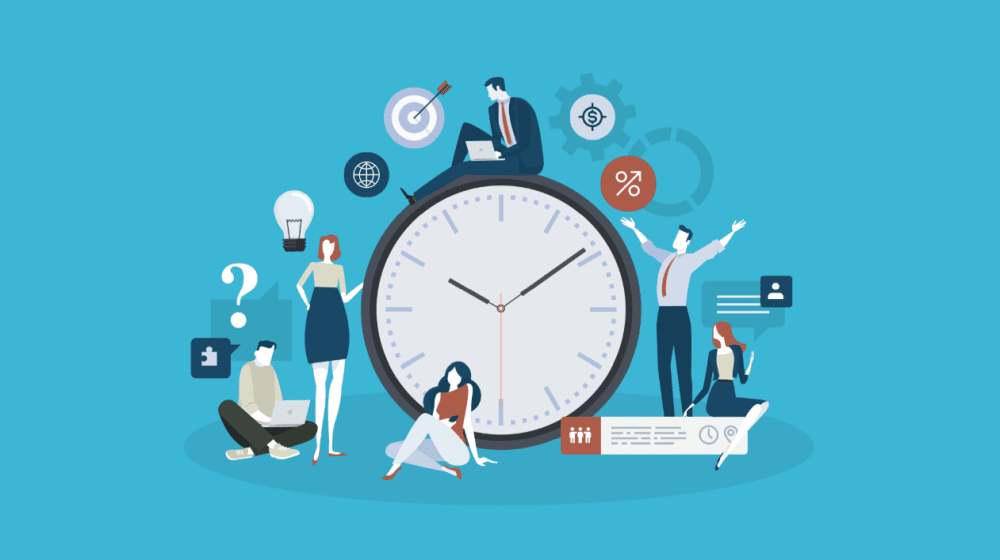As many of us experience the restrictions of lock-down opening up, 4D’s CEO Philippa Waller asks how can we step back into our busy lives at a different pace?
It’s week eleven of lockdown and I find myself calling roofers, builders and carpenters to get the home improvement projects going that I had to put on hold since moving house at the start of the year. It’s definitely time to get cracking, get going and get creating. Time for businesses to accept the ‘new normal’ – whatever ‘normal’ even means – and to stop waiting for this time to pass, but rather build from here. Innovate with new projects, hire the right staff, and from our perspective at 4D human being, get going with training and developing executives and teams to be resilient, adaptable and super impactful when leading and communicating online. In times of ‘uncertainty’ we have a choice how we respond. We can wait, stagnate or we can create. And as researcher and educator Joe Dispenza says, “The best way to predict your future is to create it.”
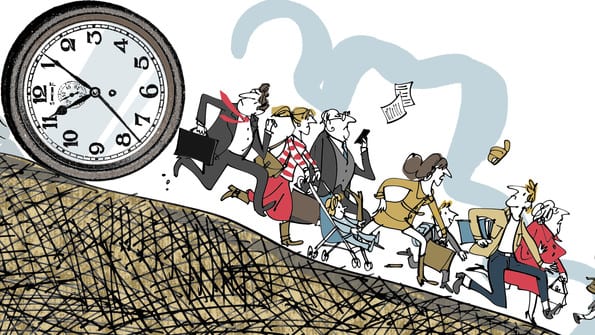
And as the wonderful Carla Harris says it’s no good hunkering down in the trenches for too long. Far better to get your head above the parapet, get a look at the terrain, see what’s going on and make some good, creative and strategic decisions about how you’re going to respond to the situation. How you’re going to make the best of your current circumstances. Or even how you’re going to innovate your way into a new situation. Go Go Go. Let’s do it. Which for me means stacking up the appointments with every craftsperson going and blitzing the home improvement plans as quickly as possible.
Or does it have to…?
Sound of screeching brakes.
Hold on.
Stop.

What about all I have learned through lockdown about not rushing around and not getting any more speeding tickets! The one thing I’m hearing from so many friends, clients and colleagues – is a desire to hold onto some of the lockdown habits they’ve created. To not let the elastic ping back when lockdown eases – and plummet back to the manic rushing around, packed out diaries, squeezed weekends and exhausted Monday mornings.
And while many of us have been busy during lockdown I’m sure we have all had a little more space or at least moments of a gentler pace due to no travel or socialising. As the old adage goes there is only space and things and things in space, and we need a balance of them both. We need space to be able to see and appreciate the ‘things’
So, let’s take a look at how we can take control of our choices and dreams without constantly feeling like we have to compromise our health or time with loved ones. How can we be smart and focused about building our lives and creating new experiences without feeling stressed or not good enough? Let’s explore ways in which we can live the lives we want to live, create relationships that will bring us happiness, work in a way that will bring us joy and build successful businesses with conscious cultures… without working 20 hour days and never getting a chance to truly enjoy the fruits of our labour.
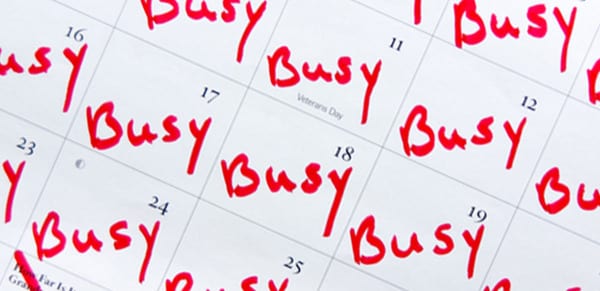
The 80/20 Rule
So how do we create and build our lives in a new way? How do we move ahead with projects, with business, with life plans, business strategies and all our hopes and dreams? All in a more efficient yet still inspiring and joyous way? We can turn to Pareto’s law to start. 20% for 80% of the result. The law is named after Italian economist Vilfredo Pareto, who, in 1906, found that 80% of the land in Italy was owned by 20% of the population. What is important about this law is that this distribution- 80/20- occurs extremely frequently. For example, 80% of your profits will typically come from 20% of your customers.
In an article for Forbes, entrepreneur Dave Lavinsky writes that: “The Pareto Principle, or “80/20 Rule” as it is frequently called today, is an incredible tool for growing your business. For instance, if you can figure out which 20% of your time produces 80% of your business’ results, you can spend more time on those activities and less time on others. Likewise, by identifying the characteristics of the top 20% of your customers (who represent 80% of your sales), you can find more customers like them and dramatically grow your sales and profits.”
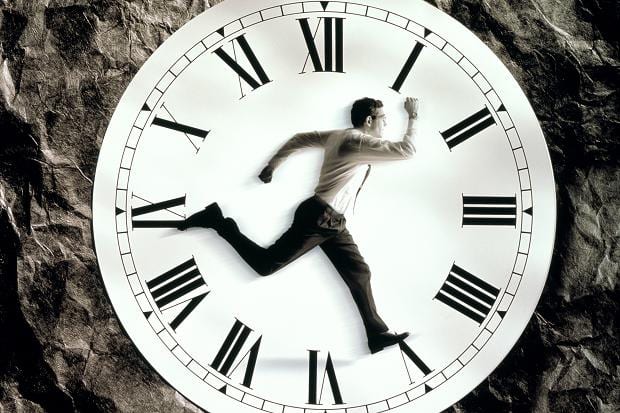
In his book, 80/20 Sales and Marketing: The Definitive Guide to Working Less and Making More, Perry Marshall write that: “80/20 applies to almost everything in business that you can count. Almost every frustration you have in sales has something to do with ignoring 80/20.” Pareto’s law applies equally to our home and personal life. Start noticing it everywhere. What is the 20% of your wardrobe that you wear 80% of the time? What are the 20% of your possessions that you get far more joy from than the other 80%? Who are the 20% of people in your life that make you the happiest? What are the 20% of conversations with your partner or friends that create the most connection and meaning? What are the 20% of behaviours that cause the most problems in your relationship, your team or your organization? And, to reverse it…what are you doing with 80% of your time that is neither bringing you fulfillment OR moving your life in the direction you want it to go?
If you find yourself feeling ‘stuck’ and taking one-step forward two-steps back, take a look at how Pareto’s principle might be impacting the situation. Could you be focusing the majority of your time, energy and resources on the wrong clients? Or the wrong hobbies or activities? As Timothy Ferriss who wrote The 4-Hour Workweek says about Pareto’s Law “Doing less is not being lazy. Don’t give in to a culture that values personal sacrifice over personal productivity.” So, take some time to evaluate your ‘output’ and ask yourself if it’s yielding the results you’d expect. If not, start to think about what creates the 80% of the success and enjoyment in your work and your personal life and start focusing more of your time and attention there.
1% Better
In his book ‘Atomic Habits’, James Clear talks about focusing on 1% increments. Clear calls these tiny changes ‘atomic habits’ and believes they are “the compound interest of personal development.” Over time these tiny improvements build up and create long-lasting sustainable change. Ultimately, as Clear says, “you get what you repeat.”
Change doesn’t have to be stressful for it to be successful. We don’t have to desperately sprint towards our goals. It can be very different. It can be intentional and emerging, all at the same time. It can be a daily sowing of seeds, a daily becoming. A daily enjoyment of the next atomic step towards…well towards the next atomic step of your journey!
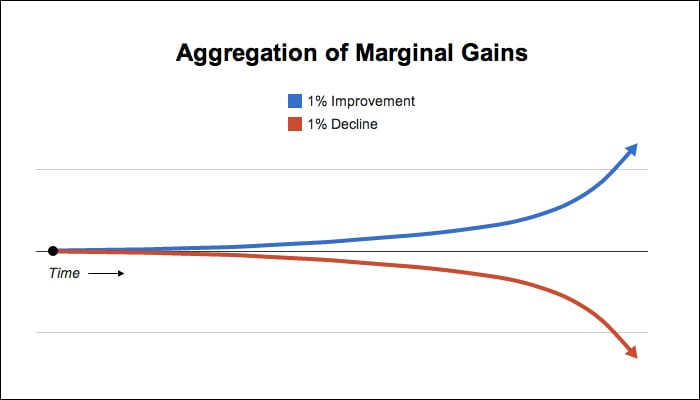
Process Focused
In life and in business we can often be incredibly ‘goal’ orientated. Businesses set annual or quarterly targets and personally we can have goals of our ultimate weight or dream house or chunky bank balance. And sure, goals are great to have. But they only take us so far. They are in a sense, a push in the right direction. But, the path to get you there, is built out of a system of daily habits that will support you towards your goal… and beyond. And this involves focusing on the process – the how – as opposed to the end result. To quote Clear: “It is your commitment to the process that will determine your progress.”

When we are focused on the process, or the system, we are working with the HOW. HOW are you building your journey rather than just getting to the end of it? As Clear write: “You should be far more concerned with your current trajectory than your current results.” Instead of living our lives like one massive tick list, we can pay attention to the space in-between. The journey TO results. From this systemic perspective we can start to shape the process that gets us there, make it more efficient, and perhaps even discover that we enjoy the journey along the way. As Clear writes: “You do not rise to the level of your goals, you fall to the level of your systems.” For me this means enjoying the conversations and collaborations with the builders, carpenters and plumbers about to work on my home improvements. Relishing the creativity, the possibilities and the new ideas they bring each time we speak. It also means enjoying the PROCESS of building a home, of creating my dream environment full of warmth and welcome, love and laughter.
Ordinary Joy
As I write this article and reflect on our choices of HOW to live in each moment, I’m reminded of professor Morrie Schwartz. As 78-year-old Morrie came to terms with his slow, debilitating and paralysing death from a motor neurone disease called ALS, he became even more aware of what was really important in life. What really counted. When asked what he would do if he only had 24 hours left to live, Morrie replied that he would do what he might do on any ordinary day. He would eat lunch with some good friends and go for an evening walk. His point being that there is perfection in ordinary joy, in the atomic gifts life can bring. And at the same time, in his final months of life, through gentle, unhurried conversations with his old student Mitch Albom, Morrie was sowing the seeds of the international best seller and inspirational book ‘Tuesdays with Morrie.’ A book that to date had sold 14 million copies and been translated into 45 languages. What an incredible ‘goal’ to achieve, but in fact it never started with a goal. It started with WHO Morrie and Mitch were and HOW they chose to be together, to talk together and to create together. Moment by moment, in only 20% of the time left to Morrie, 1% by 1%, atomic moment by atomic moment, enjoying the process of life and appreciating the journey that remained. Morrie gave us some wonderful life lessons and he certainly believed in living life to the full.
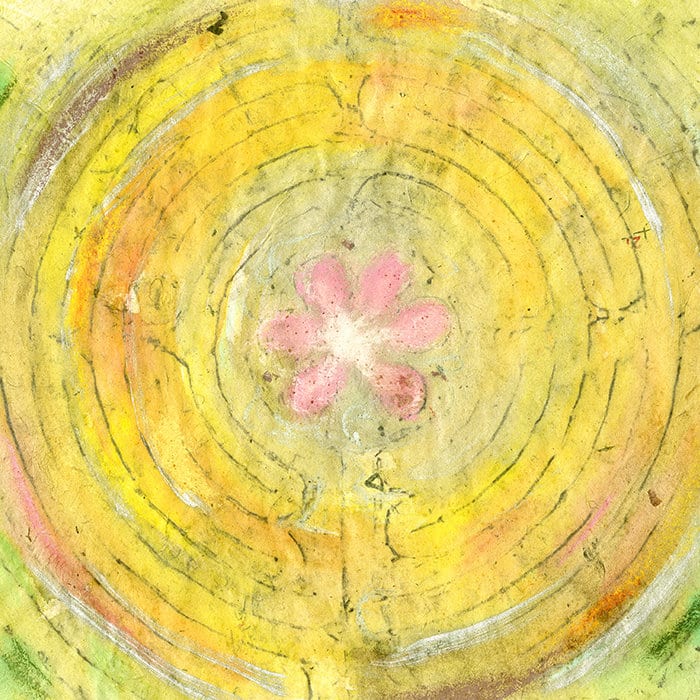
So yes, let’s get going, let’s create, let’s not wait. But let’s not rush unaware to a larger house, a bigger business or a leaner body. Let’s get going with living our lives fully every day. Let’s create Moment by Moment. Atom by atom. Breath by breath. Choice by choice.
Because Morrie, through the soft, meaningful and slow sowing of seeds, the daily 1%, the ability to be fully present and be who he wanted to be and live how he wanted to live in each moment, showed us all that we can create an extraordinary, beautiful, inspiring and generous life through small, daily choices and gentle, even atomic seed sowing…starting right now.
Final Thoughts…
All of us at 4D are thinking of everyone in these critical and very tough times and it feels important to say…
As we put together this month’s 4D newsletter we are desperately aware of the context we are writing in, with the social injustice protests in America. It brings to mind countless similar events and incidents. Too many to name and just too many full stop. We can’t sign off this article without touching on the pain and anger that so many of us are feeling throughout the world. And what comes to mind in line with this article is the deep sense of confusion and helplessness that so many of us are feeling. What can we do? What action can we take? How can we get to the goal of social equality? Yes, we can donate, we can black out our social media feeds, we can write letters, we can protest. But nothing ever feels enough. And it is here I come back to this article. As feelings of overwhelm risk plunging us into inertia and helplessness, let us ask, what can I do each day to build towards justice for all. What act of kindness, what words of support, what choice to include, what act of solidarity, what courage to call out injustice wherever it may be, what bravery to step up and use our voice or help others use theirs.
What 1%, what daily choice, what 20% that will make the difference, what atomic habit can we build that feels possible and do-able. The goal is clear but it is the PROCESS each day is what will get us there. The daily choices to be proactive in our support, compassion and love for each other. And finally, to be part of this process, to join in the daily journey, we don’t have to identify as a protester or a demonstrator or as an activist. We simply have to identify as a human being.


